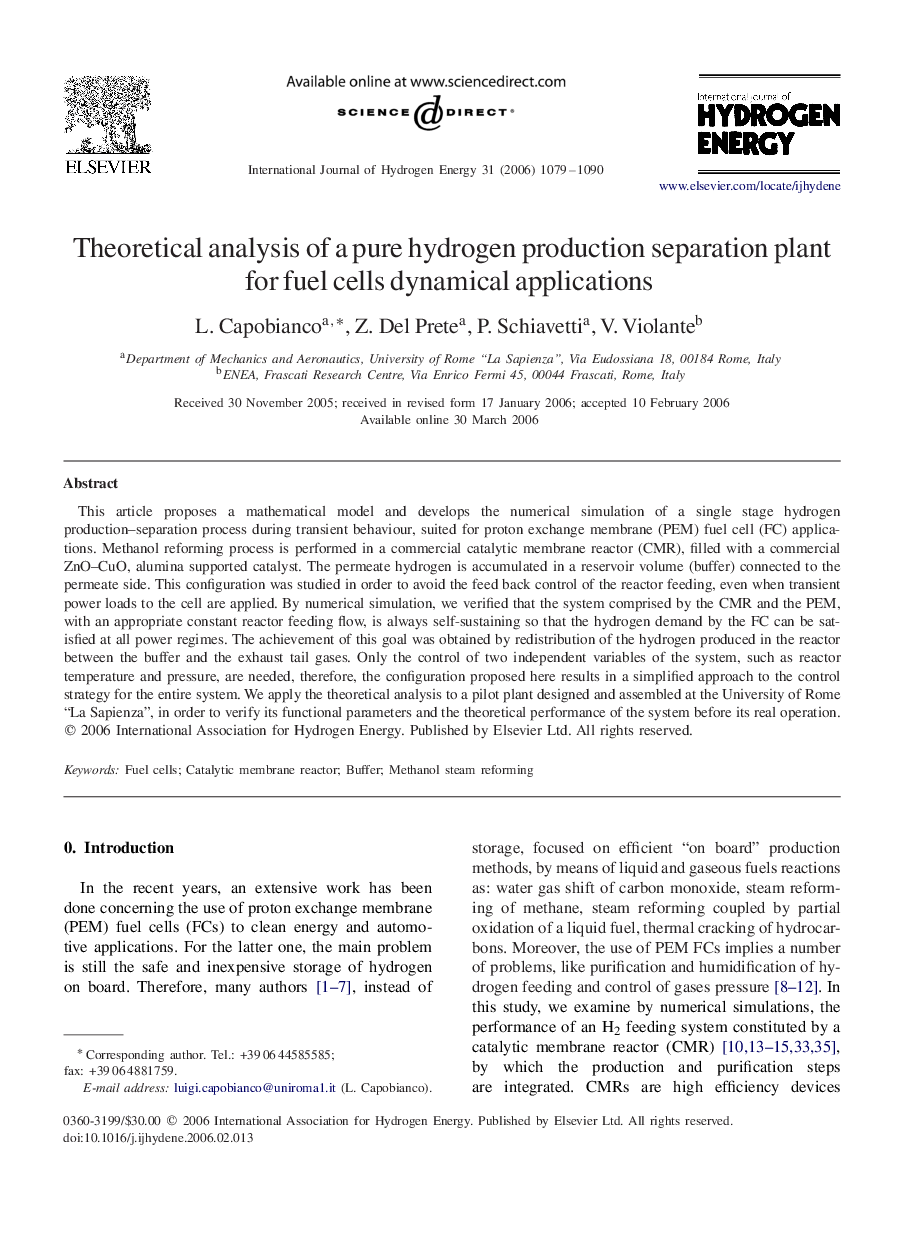| Article ID | Journal | Published Year | Pages | File Type |
|---|---|---|---|---|
| 1275412 | International Journal of Hydrogen Energy | 2006 | 12 Pages |
Abstract
This article proposes a mathematical model and develops the numerical simulation of a single stage hydrogen production-separation process during transient behaviour, suited for proton exchange membrane (PEM) fuel cell (FC) applications. Methanol reforming process is performed in a commercial catalytic membrane reactor (CMR), filled with a commercial ZnO-CuO, alumina supported catalyst. The permeate hydrogen is accumulated in a reservoir volume (buffer) connected to the permeate side. This configuration was studied in order to avoid the feed back control of the reactor feeding, even when transient power loads to the cell are applied. By numerical simulation, we verified that the system comprised by the CMR and the PEM, with an appropriate constant reactor feeding flow, is always self-sustaining so that the hydrogen demand by the FC can be satisfied at all power regimes. The achievement of this goal was obtained by redistribution of the hydrogen produced in the reactor between the buffer and the exhaust tail gases. Only the control of two independent variables of the system, such as reactor temperature and pressure, are needed, therefore, the configuration proposed here results in a simplified approach to the control strategy for the entire system. We apply the theoretical analysis to a pilot plant designed and assembled at the University of Rome “La Sapienza”, in order to verify its functional parameters and the theoretical performance of the system before its real operation.
Related Topics
Physical Sciences and Engineering
Chemistry
Electrochemistry
Authors
L. Capobianco, Z. Del Prete, P. Schiavetti, V. Violante,
